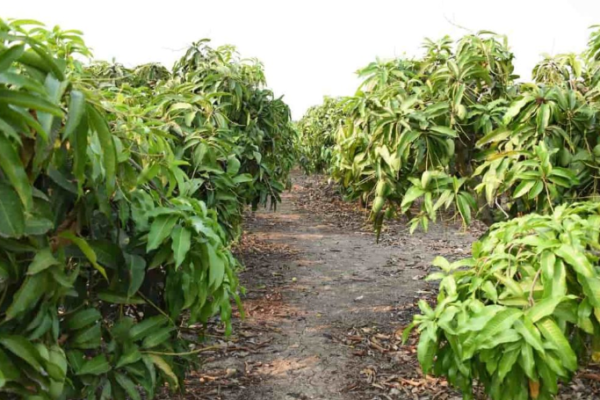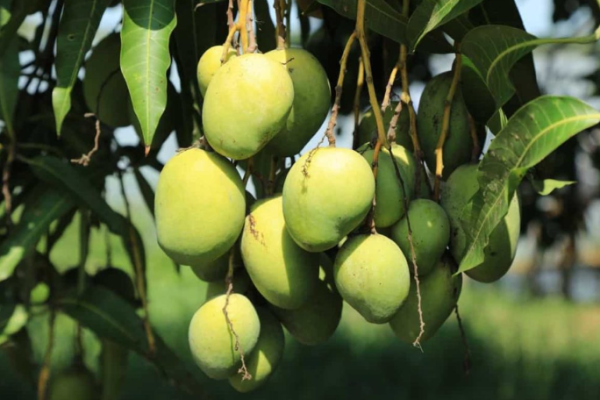Mango Farming in Philippines: How to Start, Varieties, Planting, Care, and harvesting
Mango Farming in Philippines: How to Start, Varieties, Planting, Care, and harvesting

Mango is the national fruit of the Philippines and is grown by about 2.5 million small farmers on more than 7 million Mango trees. Mango is a highly valued crop compared to other crops grown in the Philippines, such as Rice, Corn, Coconut, and Sugarcane, and greatly boosts the rural and national economy. Let’s check out more information about the Mango Farming in Philippines.

Facts about Mango farming in Philippines
- Mango has vast market potential for domestic and international exports. It is a high-value crop where Mango growers can earn P100,000.00 to P500,000.00 per hectare every year. It is suitable for upper areas with abundant sunlight and adequate humidity.
- Mango is a centennial crop that can benefit three or more generations of the family. Less than 7 million Mango trees have been planted on about 158,000 hectares in the leading Mango growing areas of Western Visayas, Central Luzon, and the Ilocos Region.
- Pangasinan, known for its sweetest Mango, accounts for 37% of the country’s annual Mango production. However, there is room for more Mango farms as the export market reflects a huge increase in Mango imports from the Philippines.
- Hong Kong is the largest importer of fresh Mangoes from the Philippines, while the United States is the largest producer of dried Mangoes. Mango juice and purees are very popular in South Korea, while Japan buys the largest quantity of Mango juice. Mango cultivation is in line with initiatives by both the Philippine government and the private sector in production, processing, and marketing support. Once produced, a 10–15-year-old tree bears about 500 kg of fruit.
- Under normal circumstances, the Philippines already has an ideal climate for growing Mangoes. The fruit grows in hot, tropical conditions without moisture, encouraging destructive fungal diseases. The Philippines has a dry season that begins to warm up when the trees begin their flower and fruit development, which helps the Mango bloom.
- Philippine Mango (national fruit) is known worldwide as the best-tasting variety of Carabao Mango. The Philippines produces 1 million metric tons of Mangoes a year (3.5% of world production) – 95% for domestic consumption and 5% for export – generating approximately US$35 million annually for the country. The Philippines is the largest exporter of Mango in Asia. Hong Kong and Japan are the largest importers of Mangoes in Asia. After bananas and pineapples, Mangoes are the most important agricu
Varieties of Mangoes in the Philippines
Carabao or Champagne – Champagne Mangoes or carabao Mangoes are probably the most popular taste. It is a sweet Mango from the Philippines. It is the most important variety of Mango grown in the Philippines. This variety is internationally known for its sweetness and exotic taste. Carabao is the most popular variety, often called the Philippine Mango or Manila Mango. The most famous are tablan, and fresco Mangoes of Guimaras and Sweet Elena of Zambales are most popular.
Pico / Piko or Padero – It is also one of the country’s most widely grown varieties of Mango.
Katchamita – It is also known as Indian Mango because of its origin. These Mangoes are smaller and rounder than Carabao and Pico Mango. It is also eaten raw or green.
Pahutan / Paho – Unlike Carabao and Pico, Pahutan Mangoes are not commercially common and are said to be harvested from the wild. These Mangoes are smaller and more fibrous than Carabao or Pico Mangoes.
Horse Mango (Manggang Kabayo) – This Mango is long in shape and usually large. It is also eaten raw and tastes sweet. It has strong flesh and large seeds.
Evergreen Mango – This type of evergreen Mango retains its green color when ripe, and if you look at the yellow spots around the fruit, you can tell if it is overripe. This type of Mango is found only in Tangub City, Misamis Occidenatal, Philippines. It is round in shape and has the taste and texture of a carabao Mango.
Can Mangoes grow in the Philippines?
There are three popular Mango varieties in the Philippines: Carabao Mango, Pico, and Katchamita (also called Indian Mango). However, Carabao is the dominant variety widely grown throughout the country and is the only exported variety. It is important to plant the Golden Mango (Carabao variety) of the Philippines at less than 15 meters as it is a large tree by nature. It can give its maximum or maximum productivity only if its natural environment is conducive to its natural habitat.
The season for Mangoes in the Philippines
The Mango season in the Philippines begins in March and ends in June. The three most popular varieties are Carabao Mango (aka Philippine Mango), Pico, and Katchamita. Of the three, the Carabo variety is the most widely grown, known for its rich and sweet fragrance, and is currently the only exported variety.
Famous Mango farm in the Philippines
Rosa Farms, a popular Mango farm in the Philippines, is a 12.5-hectare Mango orchard in the coastal province of Zambales, home to the Philippine Carabao Mango. The farm is a destination for farm tourism and is open to visitors who want to experience a truly active farm environment.
Cultural requirements ideal for Mango
Mango is a tropical tree. It can grow in and around most tropical areas along the equator. Mango trees can be grown in all regions of the Philippines, but they are more productive if grown in the following climatic conditions.
- Altitude up to 800 meters within 600 meters above sea level is still tolerable.
- Mangoes require a dry period of 3 to 5 months for plant parts and flower maturation. Fruit development also requires sunlight for 120-135 days after flowering. Mango is a biennial fruit, bearing fruit every two years.
- The ideal temperature for growing Mangoes is 21 to 27°C.
- Water requirement – For Mangoes, maximum moisture or water supply is essential.
- Soil pH 6 to 7 is best for Mangoes. It is at this level; that the nutrients are available.
- Land topography ranges from flat to rolling, not exceeding 45 degrees gradient. Mango is also grown on hard mountains, but production is difficult to manage.
- Mango needs plenty of sunlight. Fully grown Mango trees should have sunlight from morning to evening from the top of the crown to the bottom of the stem. Even partial shedding will limit its productivity. Shrub branches and plant production are low.
- Mango trees need moderate wind or airflow to prevent pests and diseases from growing inside the crown of the trees. Avoid strong winds, especially when planting windbreaker trees during flowering and fruiting.
Planting distance
Planting distance varies according to the variety, soil fertility level, and general growth conditions. Where the growth is high, the distance should be 14 x 14 meters, but in arid areas where the growth is low, it can be regulated to about 10 x 10 meters. Distances for high density plants can be about 5 x 3 or 5 x 2.5 or 3 x 2.5 or 2.5 x 2.5 meters.
Establishment of Mango orchards
- Find the ideal place for a Mango farm on the ideal cultural need for Mango. Most sunny areas with good soil moisture are suitable in the Philippines.
- Choose your planting material carefully. Make sure you get the right variety and minimize market demand. Transplanted seeds are recommended for uniform tree production. Philippine Golden (Carabao – Lamao Selection) Mango variety is preferred.
- The field should be accessible with good roads and abundant water supply for irrigation and spraying.
- A clear field of all trees and structures will expose the trees to full sunshine and free airflow. Set the rows to the east and west. It is best to place them on a triangle layout.
- Arrange farms and trees, including roads, farmhouses, working sheds, water systems, and other farm structures within the farm.
- Weed, cultivated, fertilized, and irrigate your trees every three months.
Natural farming methods can be adopted using organic and biological farm methods without chemical inputs for orchards dedicated to growing organic fruit. Demand for this specialty has grown significantly due to recent corporate scandals.
Mango tree pruning
As a general rule, the caretaker should start pruning and thinning as soon as the crown or leaves of the trees begin to be found. Pruning is the removal of unwanted vegetative parts of a tree, usually crowded branches. Insect-infected and diseased branches, leaves, flowers, or other parts of plants also need to be removed. An essential part of pruning is to train the canopy to a manageable size, shape, and height.
Pruning allows sunlight to enter the crown and allow air to circulate freely, thus reducing the incidence of pests and diseases. In general, pruned trees produce larger and higher-quality fruit than unpruned trees. The best time to harvest is after harvest. The wounded parts dry out and heal faster when done in the summer.
Care and management of bearing trees
The health, strength, and size of Mango trees determine their productivity. Tips for care and management of bearing Mango trees;
- Fence and protect the area from stray animals and intruders that can damage plants. Thirty days of protection is most required till harvest.
- Follow a clean culture. Plant and weed regularly. Remove all trees and shrubs that act as hosts for insects and diseases.
- Trees should not overlap. Cut off the filled branches. Mango is a terminal bearer, so avoid cutting healthy terminal fruiting shoot buds.
- Irrigate and keep the soil mostly moist at all times. Less water or dry soil is preferred one month before flowering and one month before harvest. Avoid accumulation of water by providing proper drainage.
Harvest management for Mangoes
- At 110 days (for very hot and dry environments), 120 days (warm climate), and 130 days (cool and high altitude) after flowering;
- When the flesh is turning yellow;
- When powder accumulates or “blooms” on the surface of the skin;
- When the shoulder of the fruit is flattened at the tip of the stem; or
- When the skin of the fruit turns dark green to brown;
- Samples of 75% ripe fruit are immersed in a 1% salt solution.
- Manual harvesting is the most effective way to avoid fruit bruises or damage. The best time to harvest is from 9:00 am to 3:00 pm because the trees and fruits are dry, and the latex flow is minimal. Harvest with pedicle intact (1.5-2.0 cm).
- Cut off the pedicels and let the latex dry before packing.
Foreign market
The Philippines is the seventh-largest producer of Mangoes in the world. It has established a reputation for supplying high-quality Mangoes to major Hong Kong, Japan, and Singapore markets. Other Philippine Mango markets include the United Kingdom, the United States, Switzerland, and Korea.
The Philippines also benefits from lower tariffs on exports provided by the World Trade Organization (WTO). Fresh and dried Mangoes tariffs have dropped by six to three percent in Japan, allowing Philippine Mangoes to enter duty-free markets.
Mango production status in the Philippines
Mango thrives in areas where it dries for at least four to five months. In the Philippines, the largest production areas are Pangasinan in Luzon, West and Central Visas, Davao Region, and Cotabato Province for Mindanao. The Philippine Mango industry supports approximately 2.5 million farmers and farm families.
Demand and supply
The Philippines exports less than 10% of the total Mango production, valued at about ً US$61 million. The Philippines exports Mangoes to 48 countries. While Mango is in demand in overseas markets, domestic consumption is worth P41.6 billion.
Posted
3 years ago
No comments yet! Why don't you be the first?











Add a comment